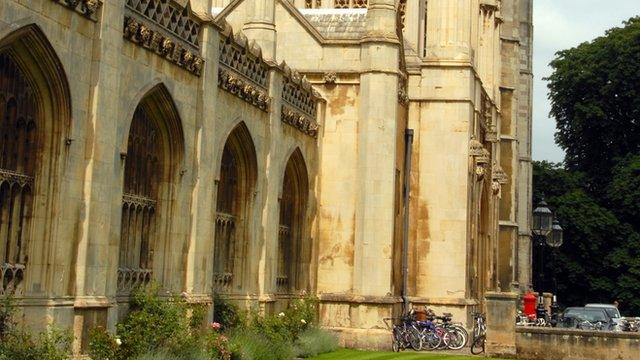Cambridge University's King's College meadow harvested with horses
- Published
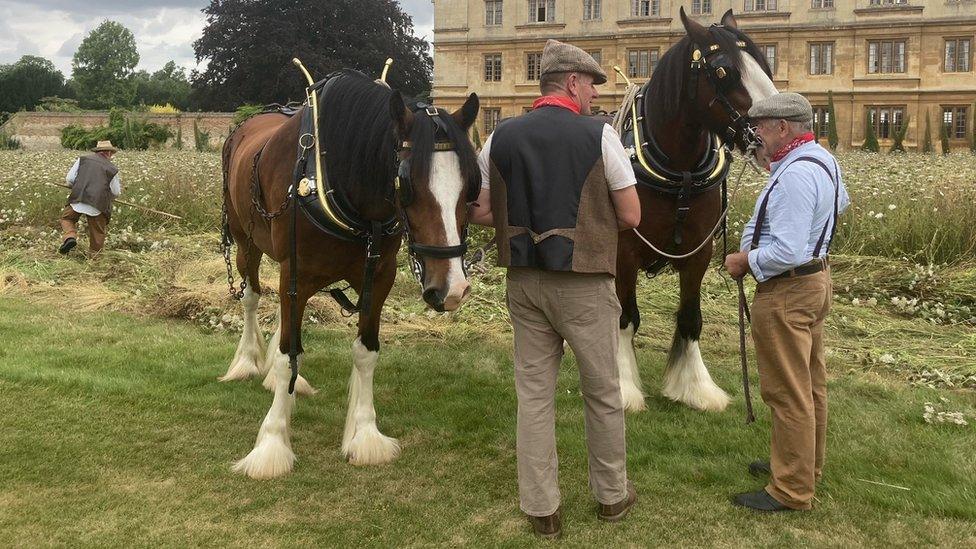
Two shire horses have been brought in to assist with harvesting
A wildflower meadow planted on part of a pristine Cambridge University lawn is being harvested with the help of shire horses and a traditional hay wain.
The meadow was planted at King's College Chapel last year.
The aim was to create a "biodiversity-rich ecosystem" in an area that had been lush lawn since the 1720s.
The college said traditional harvesting methods would give wildlife time to leave, and the bales used to create new meadows across the city.
Head gardener Steve Coghill hailed the meadow a success, saying it had been quick to attract wildlife during its first season.
This year, horses have been brought in to harvest it.
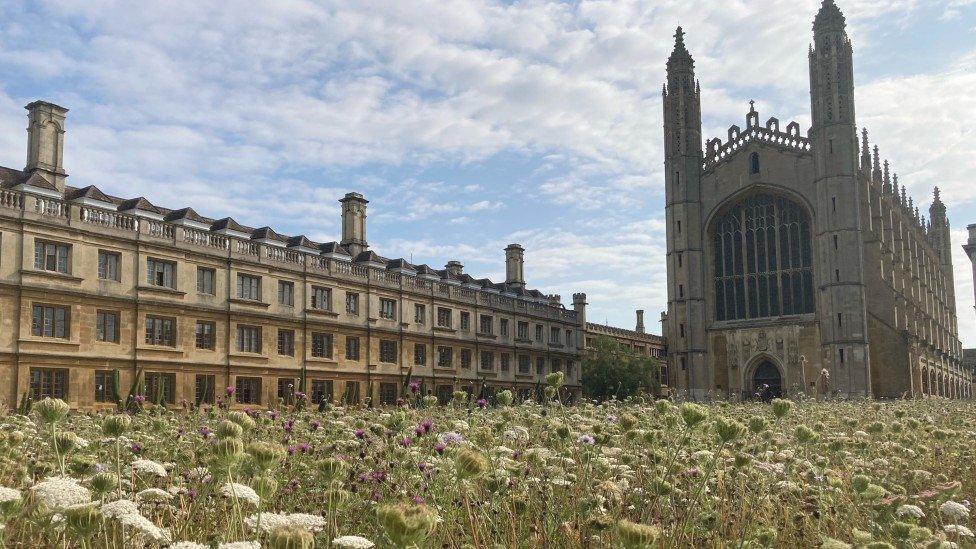
The meadow was planted on the lawn behind the chapel
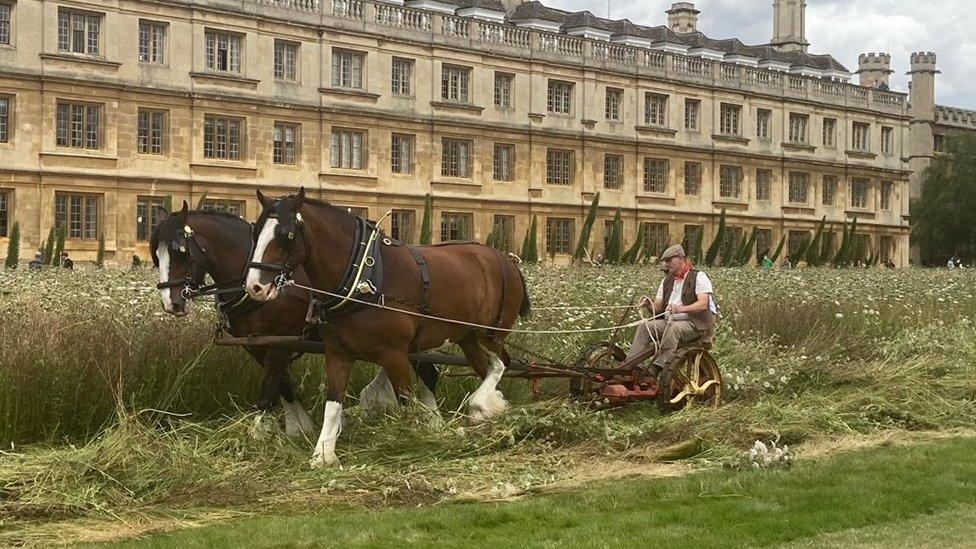
Using traditional methods is more wildlife-friendly, the college said
"Not only do they have a far lower carbon footprint than using a rotary mower, the sight of these wonderful creatures at work in the college should make for a remarkable, bucolic scene and bring a bit of Constable to Cambridge," Mr Coghill said.
The harvest is expected to take several days and the resultant bales will be taken away later this week on a traditional cart - a hay wain.
The sight of a wain will be familiar to those who have seen Suffolk artist John Constable's famous painting of the cart.

John Constable's painting of a hay wain is well known to many
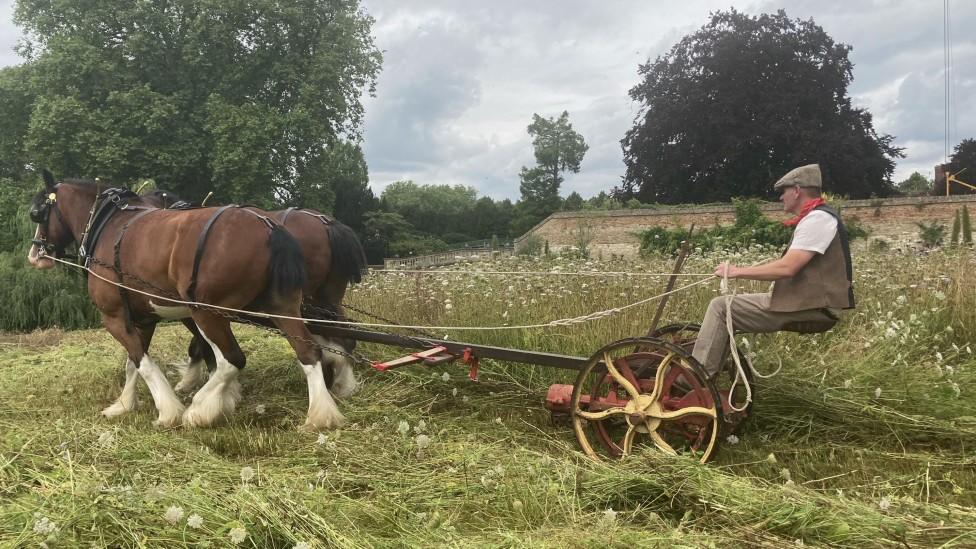
The horses are mowing the meadow and the bales will be donated to other gardeners
It took three years to prepare the King's College meadow, which slopes down to the River Cam behind the chapel.
It is now coming to the end of its second year of flowering.
Last year poppies, cornflowers and corn chamomiles bloomed, and this year has seen the germination of perennial plants such as kidney vetch and yellow rattle.
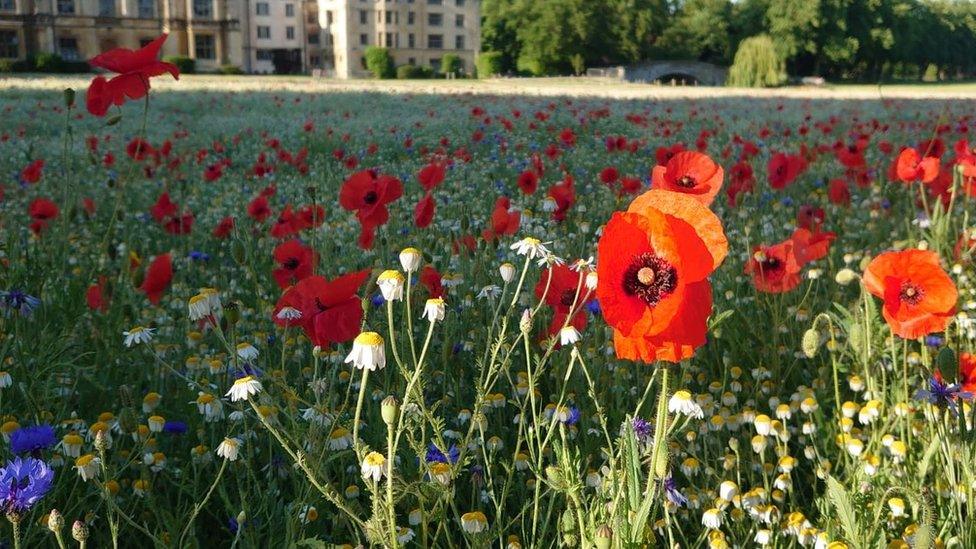
Flowers, including harebells, buttercups, poppies and cornflowers, have bloomed on the college lawn
A biodiversity monitoring study is being carried out, tracking the ecological changes as the site transitions from 18th Century lawn to meadow.
The college said the meadow "supports three times more plant species than the lawn, including nationally scarce species like wild candytuft, and species like cornflower whose native populations have all but disappeared from the UK".
About 130 insect species have so far been identified at the site and the "thriving population in turn has a positive benefit for animals which feed on the insects, such as bats".
Five bat species use the college's grounds, with bats ten times more likely to feed over the meadow than the remaining lawn, a spokeswoman added.

Find BBC News: East of England on Facebook, external, Instagram, external and Twitter, external. If you have a story suggestion email eastofenglandnews@bbc.co.uk, external
- Published4 June 2020

- Published21 January 2020
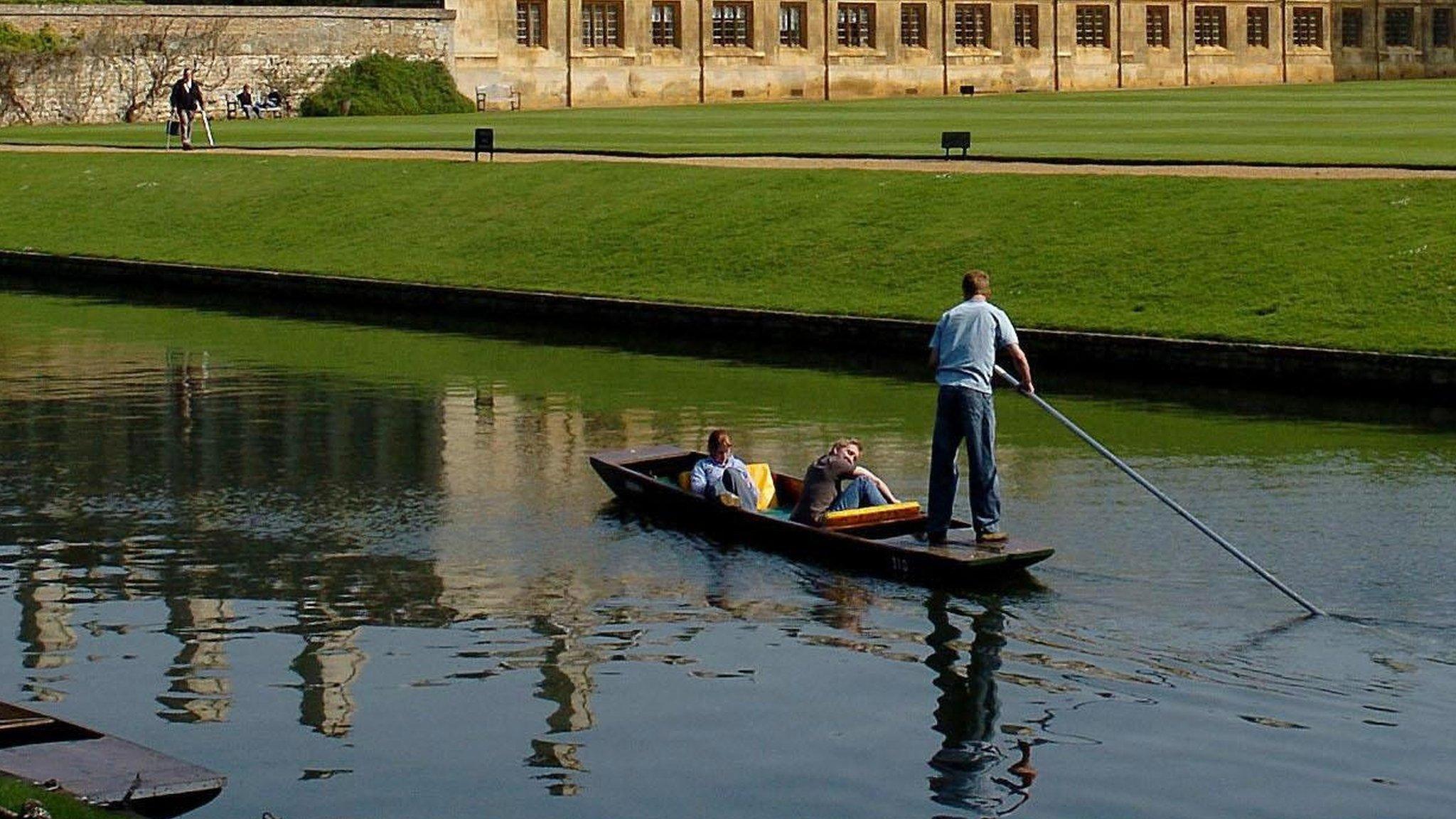
- Published21 December 2018
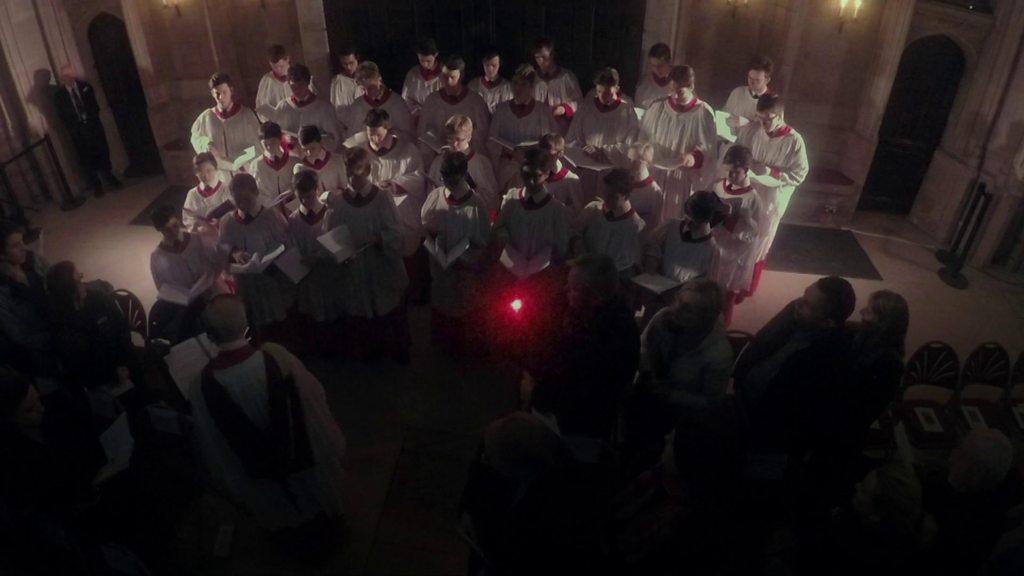
- Published30 March 2013
